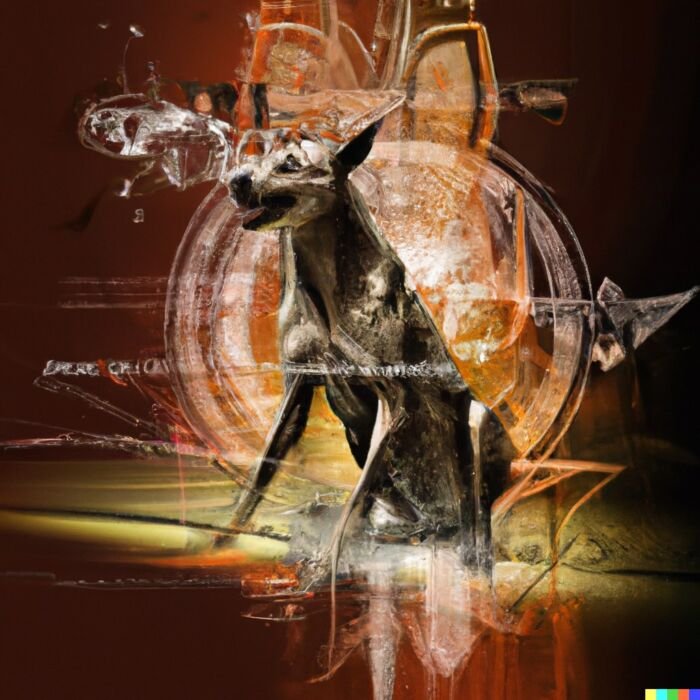The 60/40 portfolio is by and large considered industry standard and is the default portfolio most investors own, yet we over here at Picture Perfect Portfolios believe it can be improved in 10 specific ways to create the Ultimate Enhanced 60/40 Portfolio with ETFs as the building blocks.
Are you crazy?
The 60/40 portfolio is already balanced and features just the right amount of equities (for optimal returns) and bonds (to manage risk) as it is.
Enter the room 2022.

For investors fortunate enough to live in countries where inflation hasn’t been an issue for decades on end, 2022 has been a sobering reminder that a portfolio featuring two long-only asset classes (stocks and bonds) is woefully unprepared for stagflation.
What’s missing specifically?
Alternatives.

60/40 Portfolio Lacks Alternatives

Alternative asset classes and strategies that are uncorrelated from equites and bonds, offer the potential to drive positive returns in a year where both stocks and fixed income are receiving equal opportunity flame-thrower treatment.
Specifically, long-short equity (value minus junk), market neutral long-short equity, long commodities and managed futures (long/short future indexes) have all been above water in 2022.
But how exactly are we going to create space in our portfolio to add these strategies and other alternatives such as Gold, Bitcoin, Long Volatility and Merger Arbitrage?
Traditionally, the approach has been to shave down 10% of your equity exposure and 10% of your fixed income exposure to go from a 60/40 configuration to a 50/30/20 portfolio.

60/40 —> 50/30/20

Capital Efficient Low Cost ETFs As Building Blocks

However, in recent years a numbers of fund providers have created products utilizing a modest amount of leverage between two or more asset classes to provide exposure to stocks, bonds and alternatives in a creative and capital efficient manner.
A prime example of this would be a fund such as GDE (90 stocks / 90 gold) where a 20% allocation in your portfolio would provide you with 18% US equities and 18% Gold.
Hence, in the past where you’d need to use 36% of your portfolio to gain 18% US equities and 18% Gold you now only have to use 20% space.
This extra real-estate if utilized maximally allows for an investor to pursue a number of different alternatives asset classes and strategies without having to skin the proverbial 60/40 cat in the process.
What exactly do I mean by all of this?
What I’m basically trying to convey is that you can eat your 60/40 cake (stocks/bonds) and have plenty of room for a generous piece of pie (alternatives) too.
The idea is to be gluttonous in a way that isn’t zeroing in on the same piece of cake but is instead treating the portfolios like a buffet where an assortment of flavours is most optimal.

Leverage As A Tool vs Concentrated Leverage Is Bad

Leverage gets a bad name in scenarios where it is used in a concentrated manner.
Dialling up an equity only portfolio to the moon and back takes a risky asset class and makes it ever risker.
Yet what I was able to discover in the Battle of the Leveraged Portfolios is that sensibly constructed portfolios that are roughly equal parts equities, bonds and alternatives can not only handle leverage but thrive when a modest amount is applied.
Thus, in the above example leverage is being utilized as a tool to expand the canvas of the portfolio to enhance returns while managing risk as opposed to taking concentrated risky bets with one asset class.
Hence, we’re going to operate from the framework that the 60/40 portfolio has served investors well but can certainly be enhanced along the way.
Our goal here specifically is to use capital efficient building blocks (ETFs) to create the Ultimate Enhanced 60/40 Portfolio.
I’ve already written what ended up being two of my most popular articles on this blog related to ways to improve the Risk Parity Portfolio and Ray Dalio All Weather Portfolio:
- 10 Ways Investors Can Improve the Risk Parity Portfolio
- 10 Ways Investors Can Improve the Ray Dalio All-Weather Portfolio
Let’s see if we can pull things off here with the 60/40 portfolio!

Building The Ultimate Enhanced 60/40 Portfolio with ETFs

Hey guys! Here is the part where I mention I’m a travel content creator as my day job! This investing opinion blog post is entirely for entertainment purposes only. Most investors should not use leverage in any way, shape or form. There could be considerable errors in the data I gathered. This is not financial advice. Do your own due diligence and research. Consult with a financial advisor.

10 Ways Investors Can Improve A 60/40 Portfolio with ETFs
The plan here is to limit ourselves to 10 specific changes only with regards to enhancing our 60/40 portfolio.
We’ll start with a default milquetoast 60/40 portfolio of SPY and AGG.
SPY is the S&P 500 offering market-cap weighted exposure to the largest 500 US stocks whereas AGG represents the aggregate US bond market.
This portfolio, which is industry standard, exhibits extreme home country bias in the sense it completely shuns International-Developed and Emerging markets equities.
Given that diversification is our only free lunch we’re going to fix that problem by going global while also trying to add as many alternative asset classes and alternative strategies to the mix as possible with a cap of 10 changes.
We’ll keep the framework of the 60/40, that most investors hold near and dear to their hearts, while trying to build the most diversified portfolio we possibly can.

These asset allocation ideas and model portfolios presented herein are purely for entertainment purposes only. This is NOT investment advice. These models are hypothetical and are intended to provide general information about potential ways to organize a portfolio based on theoretical scenarios and assumptions. They do not take into account the investment objectives, financial situation/goals, risk tolerance and/or specific needs of any particular individual.
1/ Add Gold – GDE 90/90 US Equities + Gold
Adding Gold to the portfolio in a capital efficient manner is a cinch with GDE – WisdomTree Efficient Gold Plus Equity Strategy Fund.
The 90/90 fund gives you 90% exposure to US large cap equities and 90% exposure to Gold via futures.
The dynamic duo of US equities and Gold have an incredible track record when paired together as I explored in “The Magic Of Combining Leveraged Stocks and Gold Together In Your Portfolio“.
Historically, you get no less than double digit compound returns every decade dating back to 1972 with a 90/90 US large cap equities and Gold configuration.
Gold picks up the tab in the 70s and 2000s (when US equities struggled mightily) and US equities returns the favour in the 80s, 90s and 2010s (a rough patch for Gold).
Portfolio Allocation: 20%
Notional Exposure: 18% US Equities + 18% Gold

2/ Add Bitcoin – SPBC – 100/10 US Equities + Bitcoin
Up until recently it was challenging to gain any kind of exposure to Bitcoin for US ETF investors.
That’s all changed with SPBC – Simplify US Equity PLUS GBTC ETF.
This fund gives you 100% notional exposure to US equities with a combination of IVV ETF and S&P EMINI futures while layering on 10% to Bitcoin via Grayscale Bitcoin ETF GBTC.
A 20% allocation gives you full S&P 500 coverage at 20% while also ensuring you get a 2% allocation to Bitcoin.
We love capital efficiency over here on Picture Perfect Portfolios so we’ll gladly take it.
Portfolio Allocation: 20%
Notional Exposure: 20% US Equities + 2% Bitcoin

3/ Add Int-Dev Market Equities – NTSI – 90/60 Int-Dev Equities + Treasury
WisdomTree has created a fascinating roster of 90/60 Equity plus laddered Treasury Funds for investors to enjoy US, International Developed and Emerging Markets exposure with NTSX, NTSI and NTSE respectively.
Since, we’ve already got GDE and SPBC for our US Equity coverage we’ll now go global by allocating 15% to NTSI.
We’re getting 90% coverage for International Developed equities and 60% laddered Treasury Futures covering the entire spectrum: 2, 5, 10 and 30
We’re expanding the canvas by utilizing this fund in order to create space for an alternative sleeve.
Portfolio Allocation: 15%
Notional Exposure: 13.5% Int-Dev Equities + 9% Treasury (Laddered from 2% to 30%)

4/ Add Emerging Market Equities – NTSE – 90/60 EM Equities + Treasury
We’ll only briefly touch upon NTSE – WisdomTree Emerging Markets Efficient Core Fund.
It’s the exact same game-plan as NTSI but instead we’re covering Emerging Markets this time around.
We’re done with our equity exposure at this point.
Portfolio Allocation: 10%
Notional Exposure: 9% EM Equities + 6% Treasury (Laddered from 2% to 30%)
Source: Simplify on YouTube

5/ Add Efficient Treasury Exposure – TYA – 300% Intermediate Treasury
No other fund creates more space in our portfolio for additional sources of returns than TYA – TYA Simplify Risk Parity Treasury ETF.
The fund aims to match the duration of the ICE 20+ Year US Treasury Index by investing in both Treasuries and Treasury futures in the 10 year portion of the curve.
The capital efficient bang that you get for your buck is 3:1 meaning that just a 9% slice gives you 27% Intermediate Treasury coverage.
We now don’t have to spend another second on the “40” part of the equation.
Portfolio Allocation: 9%
Notional Exposure: 27% Intermediate Treasury
Source: VettaFi on YouTube

6/ Add Market Neutral Strategy – BTAL – Long/Short Market Neutral Equity
Now that our long equity, treasury and gold has been taken care of let’s turn our attention to alternatives with BTAL – AGFiQ US Market Neutral Anti-Beta Fund.
We’re shorting 200 high beta expensive stocks while being long 200 low beta equities.
This absolute return hedge fund strategy seeks to provide positive returns in all economic environments whenever low beta stocks outperform high beta stocks.
This year in particular the strategy has shined as an effective equity hedge to lower portfolio volatility.
It’s a great diversification strategy given that when done properly it’s generally uncorrelated with long-only stocks and bonds.
Portfolio Allocation: 5%
Notional Exposure: 5% to the strategy (200 Long Low Beta stocks / 200 Short High Beta stocks)
Source: CME Group on YouTube

7/ Add Managed Futures – CTA – Multi-Strategy Managed Futures
No portfolio is complete from a diversification standpoint without some form of managed futures strategy as part of the equation.
There are some great Managed Futures ETFs now available including KMLM and DBMF ETF but we’ll stick with the Simplify roster by taking a chance on the newly released CTA Simplify Managed Futures Strategy ETF.
Something it offers that distinguishes itself from the pack is a multi-strategy approach where Trend, Mean Reversion, Carry and Risk-Off provide four Managed Futures strategies under one hood.
With its chameleon like capacity to go both long and short commodity and financial futures (excluding equities and currencies) it has thrived in 2022 by capturing strong trends in the markets to drive impressive positive returns for investors.
Portfolio Allocation: 16%
Notional Exposure: 16% to the strategy (actual gross exposure is much greater)
Source: Simplify on YouTube

8/ Add Long Volatility Tail Risk – CYA – Tail Risk Strategy
Rapid and brutal market drawdowns are always a possibility (such as what happened in March 2020) so we’re carving out space in the portfolio for CYA – Simplify Tail Risk Strategy ETF.
By utilizing high income strategies the fund is able to purchase various PUT options (at different strike prices) to hedge against severe equity market selloffs.
You can think of this as portfolio insurance.
This strategy offers tremendous rebalancing potential when/if it pays out handsomely, in a buy-low scenario, when markets are down the most.
Portfolio Allocation: 5%
Notional Exposure: 5% to the strategy
Source: Learn To Invest – Investors Grow on YouTube

9/ Add Merger Arbitrage – ARB – Merger Arbitrage Strategy
Since we’re on quite a roll we’ll continue to diversify our portfolio by adding ARB – AltShares Merger Arbitrage ETF.
Merger-arbitrage is an event-driven hedge fund strategy where managers seek to purchase stocks that are being acquired to capture a favourable spread between its current market price and proposed acquisition terms.
It’s typically a high Sharpe Ratio strategy that provides diversification benefits from other asset classes and strategies that already exist in your portfolio.
Portfolio Allocation: 2%
Notional Exposure: 2% to the strategy
Source: Simplify on YouTube

10/ Add Interest Rate Hedge – PFIX – Interest Rate Hedge
No other alternative investment strategy we’re reviewing in the Ultimate Enhanced 60/40 portfolio has done better in 2022 than PFIX – Simplify Interest Rate Hedge ETF.
In a rising interest rate environment (such as 2022) this particular ETF thrives when fixed income volatility increases drastically.
The fund utilizes OTC derivatives (over-the-counter interest rate options) which function in a similar manner to owning a long-date put option on the 20-year Treasury.
We don’t have a lot of space to allocate to this strategy but we’re thrilled with its results even with just a 2% commitment.
Portfolio Allocation: 2%
Notional Exposure: 2% to the strategy

The Ultimate Enhanced 60/40 Portfolio: Complete ETF Holdings and Information
Let’s see what the full roster of 10 ETFs looks like when it’s all put together.
In terms of portfolio composition no ETF takes up more than 20% space whereas the minimum allocation is 2%.

Ultimate Enhanced 60/40 Portfolio Holdings
20% GDE – WisdomTree Efficient Gold Plus Equity Strategy Fund
20% SPBC – Simplify US Equity PLUS GBTC ETF
16% CTA – Simplify Managed Futures Strategy ETF
15% NTSI – WisdomTree International Efficient Core Fund
10% NTSE – WisdomTree Emerging Markets Efficient Core Fund
9% TYA – TYA Simplify Risk Parity Treasury ETF
5% CYA – Simplify Tail Risk Strategy ETF
5% BTAL – AGFiQ US Market Neutral Anti-Beta Fund
2% PFIX – Simplify Interest Rate Hedge ETF
2% ARB – AltShares Merger Arbitrage ETF
Simplify dishes up 5 ETFs whereas WisdomTree offers 3 leaving just AGF and AltShares as the other fund providers.
Simplify and WisdomTree, in particular, deserve a significant round of applause for creating the necessary puzzle pieces to allow this type of portfolio to even exist in the first place.
Not long ago investors didn’t have as much access to alternative investment strategies or capital efficient ways of modestly leveraging equities, bonds and gold to create space in the portfolio.

150% Expanded Canvas: Ultimate Enhanced 60/40 Portfolio Exposures
Now that we’ve covered the entire roster of ETFs let’s examine what kind of notional exposure we get for all of the specific strategies we’re pursuing.
60.5% Equities (38% US – 13.5% Int-Dev – 9% EM)
42% Intermediate Treasury
18% Gold
16% Managed Futures
5% Long Volatility / Tail Risk
5% Market Neutral
2.0% Interest Rate Hedge
2.0% Merger Arbitrage
2.0% Bitcoin
We’ve maintained our darling 60/40 equity and bond mix and managed to add significant exposure to both Gold at 18% and multi-strategy Managed Futures at 16%.
Our tail risk portfolio insurance comes in at 5% which is also the same amount we’re gaining with market neutral equities.
We round things off with a sprinkling of 2% Merger-Arbitrage, Interest Rate Hedging and Bitcoin.
Overall, we’ve expanded the canvas to the point of creating space for 50% alternative strategies.
This provides an opportunity for enhanced returns long-term while jazzing up the overall diversification of the portfolio.

Investing Strategies Added
- International Developed Market Equities
- Emerging Market Equities
- Gold
- Managed Futures (Trend-Following)
- Managed Futures (Others Strategies: Mean Reversion, Carry, Risk-Off)
- Long Volatility (Tail Risk)
- Market Neutral
- Interest Rate Hedge
- Merger Arbitrage
- Bitcoin
With just 10 simple upgrades we’ve managed to add 10 strategies to the mix of just US Equities and Treasuries!
If you consider the Managed Futures strategies as being 4 distinct line items that brings it up to 12 altogether.
Not too shabby at all, I’d say!
Let’s move on to the potential pros and cons of the Ultimate Enhanced 60/40 portfolio.

The Ultimate Enhanced 60/40 Portfolio Pros and Cons
Expanded Canvas 60/40 Pros
- Going from US equity home country bias to global diversification with International Developed (NTSI) and Emerging Markets Equities (NTSE) added to the mix
- Utilizing capital efficiency in products such as GDE, SPBC, NTSI, NTSE and TYA to create “real estate” space in the portfolio for alternatives
- Having significant exposure to absolute return strategy funds that have the capacity to go both long/short such as CTA and BTAL that can make money in every environment and often thrive during extreme markets
- Bringing “tail risk” long volatility protection via PUT options into the portfolio as insurance against distinct rapid market drawdowns
- Having exposure to both Gold and Bitcoin as fiat hedges and diversifiers within the portfolio
- Being prepared for inflationary regimes with market neutral, trend-following and interest rate hedges to provide a ballast when stocks and bonds are down together
- Having the entire strategy available as ETFs without the need to purchase Mutual Funds or Interval Funds (which some investors don’t have access to *wink wink* Moi)
- Having significant exposure to an ensemble “alternative sleeve” that can actually make a difference in the portfolio as opposed to merely a token amount
- Gaining exposure to a number of unique strategies that have only recently become available to retail and DIY investors via fund providers such as Simplify and WisdomTree
Expanded Canvas 60/40 Cons
- Having to deal with tracking error when the “alternative strategies” are a drag on the portfolio as opposed to being additive
- Having overall higher fees versus single digit basis points market beta exposure to the S&P 500 and aggregate bond index

Nomadic Samuel Final Thoughts
When it comes to the “alternative sleeve” of the Ultimate Enhanced 60/40 there is plenty of room for flexibility.
For investors adamant about not having ANY exposure to cryptocurrency within the portfolio it would be easy enough to swap out SPBC and add a US factor focused equity strategy instead.
A fund like USMV would give you exposure to US minimum volatility or VFMF for multi-factor or AVUV for small-cap value to name just a few.
You could easily choose your own adventure to further diversify your equities away from market-cap beta strategies only.
If for some reason you’re not keen on having Interest Rate Hedges or Merger Arbitrage you could eliminate those funds completely and add the extra 4% to a fund like CTA to enhance your notional managed futures exposure.
The point of creating the Ultimate Enhanced 60/40 portfolio is to give you a general framework to work with but not to stymy your creativity as an asset allocator.

Return Stacked 60/40: Absolute Return Index
I’m not the first to take a swing at expanding the canvas of a 60/40 portfolio to add alternatives to the mix.
Resolve Asset Management and Newfound Research have created the Return Stacking 60/40 portfolio that I reviewed this year.
It’s significantly outperformed a vanilla 60/40 portfolio during both positive markets (2021) and negative markets (2022) with its stack of managed futures and global systematic macro strategies especially shining this year in particular.
You can check out its live results at ReturnStacking.Live
With its mix of Mutual Funds and ETFs, it has significantly more exposure to managed futures strategies than the Ultimate Enhanced 60/40 portfolio.
I’m a big fan of return stacking as a framework for expanding the canvas of your portfolio to diversify into alternatives.

I Don’t Personally Invest Using Benchmarks
Something that I’d like to make clear is that I don’t personally invest using any type of benchmark.
In other words, when I expand the canvas of my portfolio I’m not insisting that I have a 60/40 allocation as part of the equation.
I’m contrarian in my belief that NOT handcuffing your portfolio to a benchmark is one of the greatest gifts you can give yourself as an investor.
It allows you to allocate in a way that suits your specific personality and investing goals without requiring you to high five your neighbour when your portfolio is not performing “just like” theirs.
However, I’m aware that most investors don’t want to deviate to such extremes and an enhanced 60/40 portfolio offers a solution where you get to keep what “everyone else is doing” but also differentiate yourself from the pack by adding alternative diversifying return streams to the mix.
If insisting upon a 60/40 framework as a base for your portfolio allows you to stay the course with alternative investment strategies, I think that’s an excellent compromise overall.
I think that’s where we’ll leave things for today.
What do you think of expanded canvas 60/40 portfolios?
Let me know in the comments below.
Important Information
Investment Disclaimer: The content provided here is for informational purposes only and does not constitute financial, investment, tax or professional advice. Investments carry risks and are not guaranteed; errors in data may occur. Past performance, including backtest results, does not guarantee future outcomes. Please note that indexes are benchmarks and not directly investable. All examples are purely hypothetical. Do your own due diligence. You should conduct your own research and consult a professional advisor before making investment decisions.
“Picture Perfect Portfolios” does not endorse or guarantee the accuracy of the information in this post and is not responsible for any financial losses or damages incurred from relying on this information. Investing involves the risk of loss and is not suitable for all investors. When it comes to capital efficiency, using leverage (or leveraged products) in investing amplifies both potential gains and losses, making it possible to lose more than your initial investment. It involves higher risk and costs, including possible margin calls and interest expenses, which can adversely affect your financial condition. The views and opinions expressed in this post are solely those of the author and do not necessarily reflect the official policy or position of anyone else. You can read my complete disclaimer here.






